In recent years, the creative research of Marco Morosini has explored a current theme: the alienation of man in modern society. Through a visual language strongly influenced by Pop Art and commercial graphics, Morosini depicts feelings of isolation, anonymity, and conformity. This led to the Uominiuomini series, a provocative tribute to mass production. Each little man, devoid of features and dressed uniformly, is mechanically reproduced. These archetypal figures were inspired by Pop Art icons such as Roy Lichtenstein and Andy Warhol, and were created using serial techniques. In an era dominated by artificial intelligence, Morosini asserts the need for works made by man for man. Currently, Uominiuomini REFLEX is on display at the Orea Malia space, located on Via Ugo Bassi in Bologna.

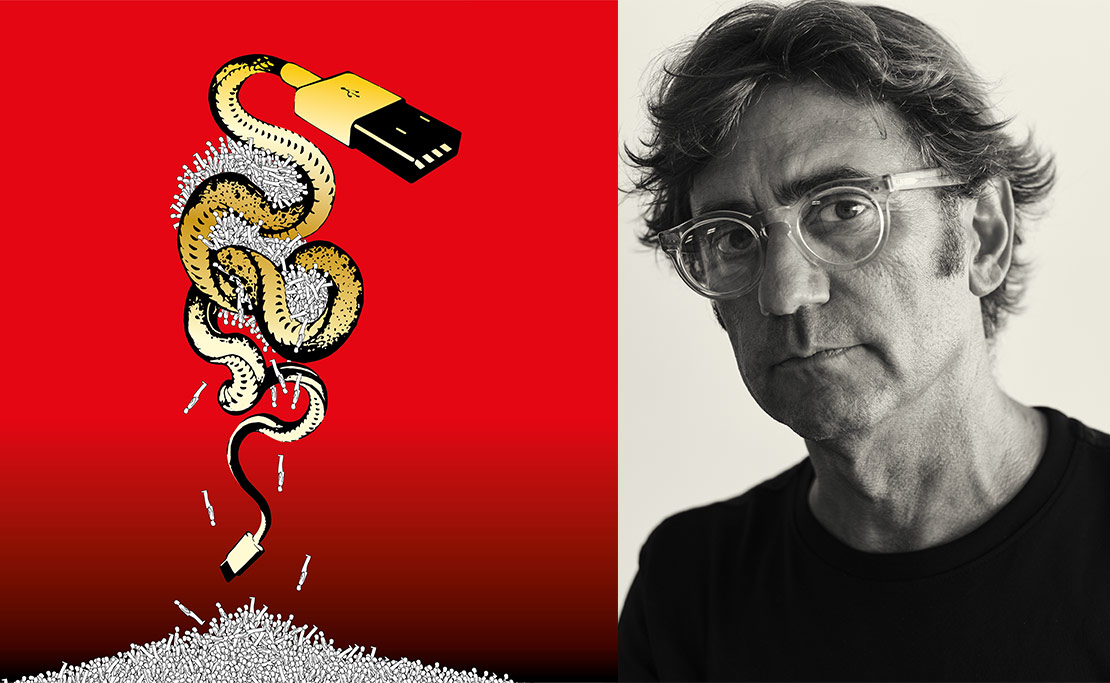
Artistic craftsmanship and expressive authenticity: the art of Marco Morosini
Marco Morosini is an artist who celebrates free and authentic expression through his art. His creative talent has led him over the years to express himself through images, objects, and sculptures, evolving his technique from digital and mechanical production to a completely manual approach. Through his work, he claims the value of manual creation and the uniqueness of non-serial creations. Represented by the Zamagni Gallery in Rimini, currently his works are made with acrylic on canvas, fabrics, plasters, chalk, and resins, creating material backgrounds.

Get to know Marco better through a long interview, where we trace his artistic career and the most significant moments that have led him to establish himself on the national and international scene.
#answer1
Hello Marco, I am very happy to bring you into this virtual space and have a conversation with you. I am curious and I want to ask you many things, let's start right away. In 1996 you moved to Vienna for an experience at the No Frontiere Design studio, your first international experience, I imagine it was an important moment for your artistic career. What is the memory associated with that moment?
Hello Maria Rosa, I am thrilled about this interview and I thank you for the time you are giving me. The memory of Vienna is truly special to me. I went there for the first time with my 1969 Mercedes 200/8, the first car I bought for 2,500,000 lire. This car accompanied me both to university in Urbino and in my first work experience in Vienna. At that time, technology was still in its infancy and we used the fax as the main communication tool. I remember sending so many pages of my graphic projects that I angered the owner of No Frontiere Design because I used up all the fax toner, forcing him to turn off the machine due to overheating. Despite these episodes, the experience was fantastic. I had already studied in Germany and I greatly appreciated the order and precision of the Anglo-Saxon world in typography and photography. Even the Internet was a novelty, limited to a small computer used only to send emails to suppliers. We used an innovative system called Quick Mail to communicate within the studio, which sometimes felt alienating because we were talking to people a few meters away through technology. No Frontiere Design was one of the most high-tech studios in Europe and this experience left an indelible memory on me.
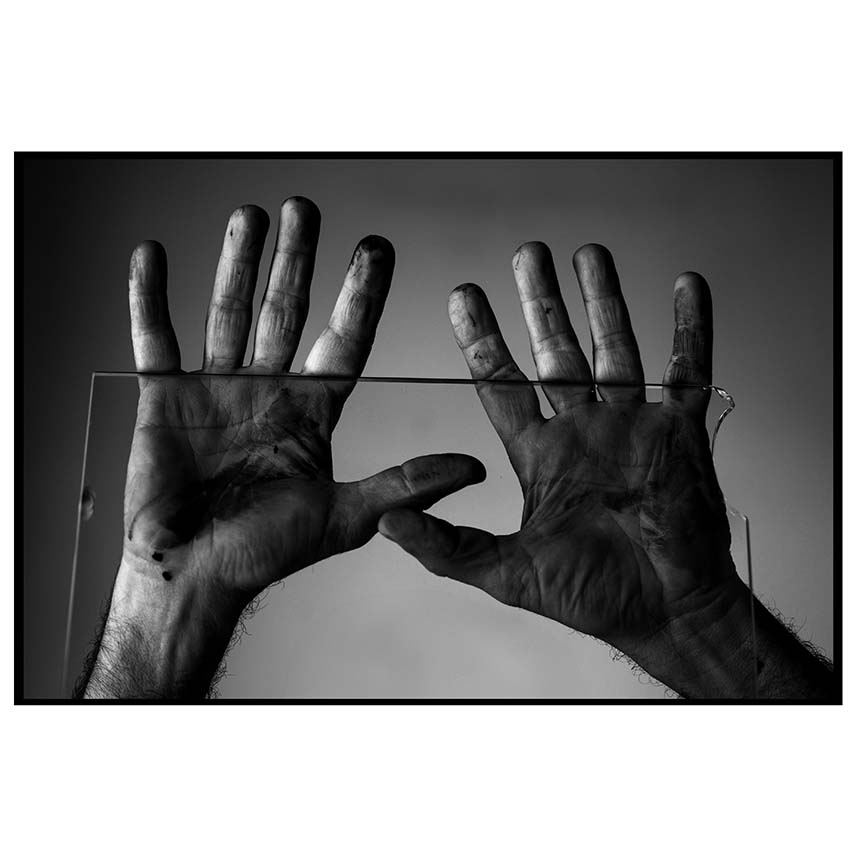
#answer2
After your experience in Vienna, you meet Oliviero Toscani and begin your journey at Fabrica, the communication research center promoted by Benetton and directed by the master himself. This year Fabrica celebrates its 30th anniversary, and I imagine that being part of that cultural ferment must have been a great source of inspiration and knowledge for you. Could you tell me what this encounter and experience at Fabrica meant to you?
I consider myself very fortunate to have been part of this historic moment at Fabrica. Often, when experiencing significant social or artistic events, one may not realize the importance of the moment. You are caught up in such a whirlwind that there is no time to reflect on the value of what you are experiencing. Only years later, looking back, do you truly appreciate the uniqueness and relevance of that period. For me, Fabrica and Oliviero Toscani were fundamental. Toscani was a great mentor, teaching me true creativity and authentic expression. I came in as a graphic designer and left as someone who had learned to communicate through images, leaving decoration behind to embrace expression. Toscani had a unique teaching method: we worked on individual projects and presented them to the whole group in the auditorium. Each presentation was followed by honest and direct feedback from the other participants. This open and unconstrained exchange allowed for incredible personal and professional growth. We truly understood the value of our work and were motivated to constantly improve.
Fabrica was a place where the best creative minds from around the world converged. I remember fantastic colleagues from Japan, Germany, Spain, Portugal, Brazil, England, and many other countries. There was an incredible cultural melting pot, with people eager to learn and give their best. In the evenings, the caretaker would literally kick us out of Fabrica because he had to close the facility, often turning off the lights to get us to leave. We were so engrossed in our projects that we didn't even realize it was already nine in the evening.
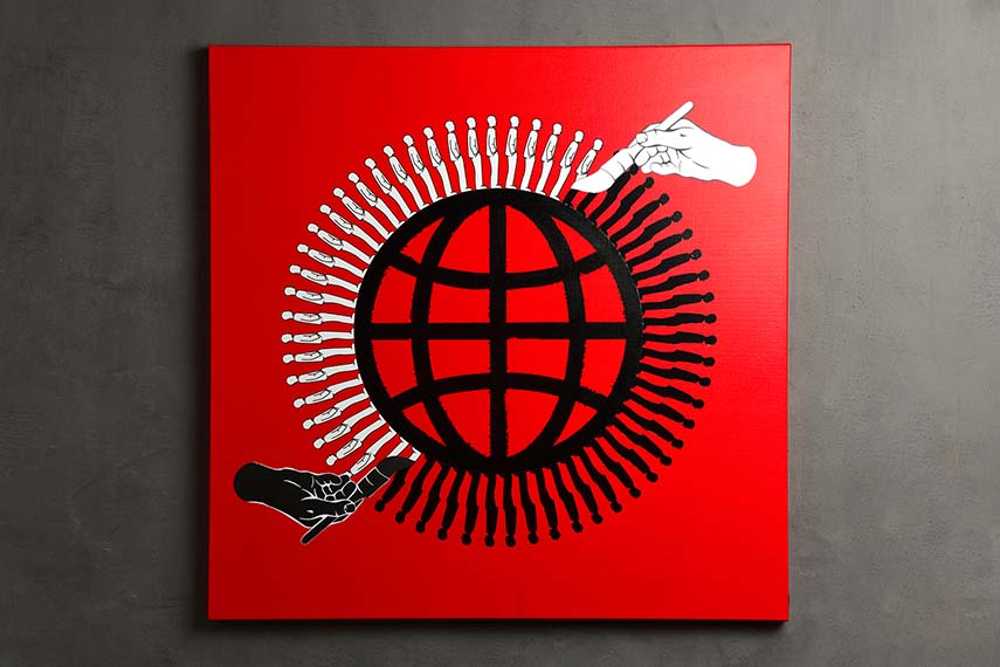
#answer3
In the following years, collaborations overseas also arrived, first in New York, called by Miramax to oversee the editorial project of Talk Magazine, then in Paris for Liberation, and also in Italy for the Italian weekly L’Espresso. How did your international experiences influence your work?
I arrived in New York thanks to Oliviero Toscani, who called me as an art director for the magazine Talk Magazine. It was an extraordinary experience; I had never seen New York before then, and at 28 years old, in 1999, I found myself catapulted into a completely new and fascinating reality. From the first minute, I was immersed in a frenetic work environment, contributing to both the new graphic design of Talk Magazine and the We on Death Row campaign by Toscani for Benetton. I remember that the first issue of Talk Magazine was distributed with a special catalog, We on Death Row, which I had designed from America. I worked on the graphics of the catalog and posters. Toscani had spent the last ten years photographing death row inmates, creating a shocking campaign that elicited strong reactions, leading some American Benetton stores to refuse to display the merchandise. In America, there is indeed a significant percentage of people in favor of the death penalty. This experience shaped me immensely, finding myself in one of the most dynamic cities in the world and working for a magazine produced by Miramax, which had access to the biggest stars. Images of celebrities like Matt Damon, Robert De Niro, Martin Scorsese, and Jennifer Lopez, portrayed by Toscani, enriched the pages of the magazine.
My experience with Liberation in Paris was one of the most complex and challenging projects of my career. Again, Toscani called me as an art director to help him create the almanac for the thirtieth anniversary of the newspaper Liberation. It was an extremely demanding job: we selected and photographed the most significant articles of three decades, building a narrative architecture that illustrated the highlights and main themes of the newspaper's history. Also involved in the creative direction was Alex Marashian, a brilliant mind. I remember one day, after a particularly exhausting day, coming home, Toscani leaned with one shoulder against the steel elevator and said to me, "I really didn't need to take on this job, it's too complicated, heavy, and difficult." I replied, "I didn't need it either, but Oliviero, we have to see it through." And so we did, successfully completing the project.
The experience with L'Espresso, although brief, was very stimulating. We created some covers together with Toscani, always trying to avoid banality and communicate through powerful and liberating images. Unfortunately, we did not achieve the total expressive freedom we desired. Once again, it was Toscani who called me to collaborate, and I helped him with the project without claiming credit that does not belong to me. Creating covers capable of conveying a strong and expressive message has always been very rewarding for me.
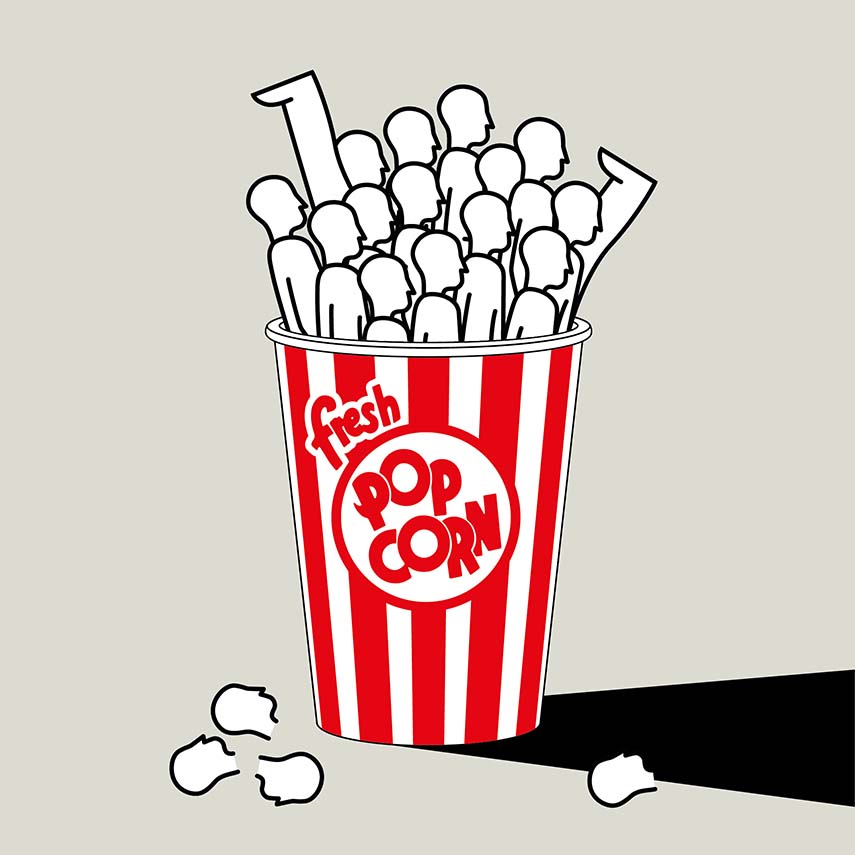
#answer4
In 2001 Lo studio was born in Pesaro, a bit like coming home after traveling and experiencing many other places. Why there, where you were born and raised?
Yes, in 2001, after concluding my experience at Fabrica and in America, I returned to my hometown, Pesaro, where I had studied at the State Institute of Art. We had an old industrial space on the outskirts, completely abandoned, with a leaking roof and no more fixtures. Despite being in disastrous conditions, this space had an incredible charm and a wonderful light. I decided to fix it up and transform it into my headquarters: the studio and living space together in a huge loft of almost 1000 m². At the beginning, I was working there alone, but soon, with the increase in projects, I started collaborating with a young graphic designer. When she answered the phone with: Studio Morosini, good morning", it gave the impression that there were a hundred people working for me, but in reality, it was just the two of us.
Over time, the studio grew and we began collaborating with various international brands. In 2005, within this space, the Brandina brand was born and developed. This place also housed my personal art gallery, where I exhibited my first works from the UominiUomini series, the Stone Messages installations with marble tombstones, the Memory Boxes, and other artistic projects that gradually took shape. This space allowed me to fully express my creativity and share my works with the public.
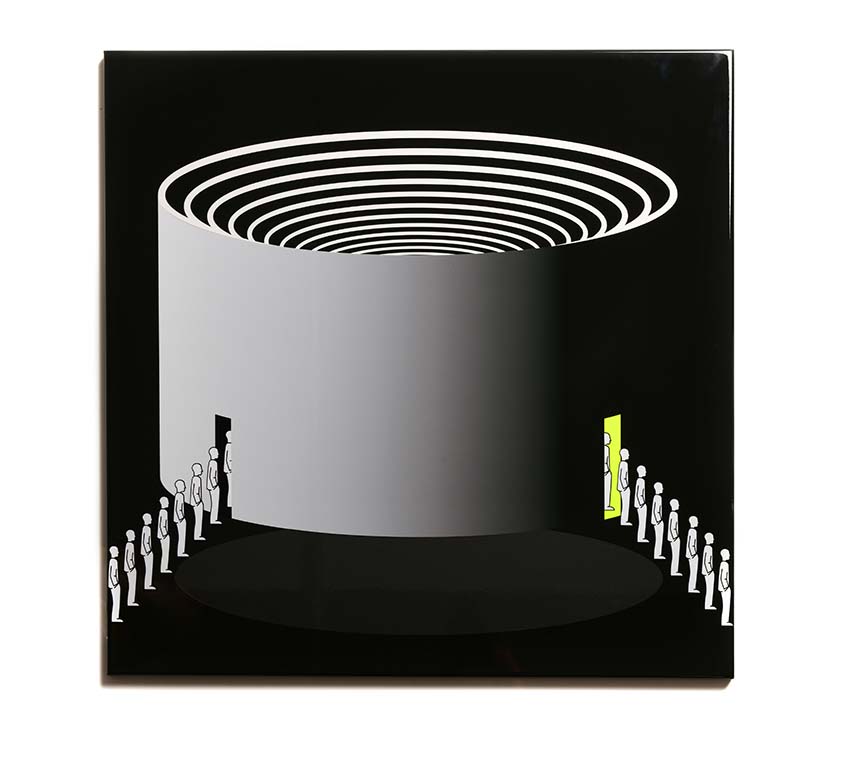
#answer5
In 2005, together with Barbara Marcolini, I founded Brandina, a brand of bags and accessories made with the fabric of beach loungers. The creations of the brand became an icon in the beach environment, combining the originality of the fabric with the traditional roots of the Adriatic Riviera. Tell me how this project was born.
In 2004, I created the book Divi di Rimini, a photographic portrait of the lifeguards published by Electa Mondadori. This book collected all my photographs of the lifeguards of the Romagna Riviera, taken along 40 km of coastline from Cattolica to Bellaria. I photographed the most charismatic and representative people of the Riviera, telling their stories through my images. I put a lifeguard's photo on the cover, but I felt that it was not enough to convey the energy and atmosphere of the sea present in the pages. So, I decided to add a dust jacket made with the fabric of beach loungers.
That's how I came into contact with this material with colored stripes, used throughout the Adriatic Riviera, which encapsulates our dreams, first kisses, swims in the sea, and summer vacations. I realized its strong expressive power and decided to use it not only for the book cover but also to create beach accessories and bags. And so, the BRANDINA brand was born.
Together with my wife Barbara, who is an architect and takes care of the style and management of the stores, I handle the creative and graphic part. The brand is successful: to date, we have six flagship stores and we have chosen to remain small, focusing on our Adriatic Riviera. We do not want to become a global brand, but a glocal one: local and unique, yet with international visibility. We firmly believe in the beauty of being singular and provincial, resisting the globalization that makes everything uniform everywhere. Our stores are only here, and those who desire our products from abroad can purchase them directly from our stores or online.

#answer6
Still in the Marche region, after a long restoration work, in spring 2013 the Castle of Granarola opened, a historic residence and international hospitality venue immersed in nature on a hill overlooking the sea. The first Long Stay House by Brandina. It seems that in this place you can find everything that is your creative imagination and the essence of your connection with your region. Can you tell me about your relationship with the places where you feel you can fully express your artistic talent.
Yes, Granarola is a place to which I have been deeply connected since 2007. I was born just 3 km from this place and every time I go there, I breathe the air that raised me. I bought this old ruin to save it from real estate speculation that intended to turn it into apartments. I took care of restoring every single stone, rebuilding the rooms with the best sun exposure and using natural materials. I paid attention to every architectural, graphic, and furnishing detail.
Today, the Castle of Granarola is a relais with 24 residences, each with a unique design. The six new residences recently inaugurated host six of my artistic processes: BRANDINA, The Art of Selling a Bag, New Humanity, Basis, UominiUomini, and Stones. Granarola is a place that deeply belongs to me; it recharges and inspires me. It is a place completely immersed in nature and lives in rhythm with nature, offering a refuge of peace and serenity.
Gallery
Credits
Cover images SX by Enrico De Luigi
Text images N.2 by Tommaso Flores N.6 by Tommaso Flores
Gallery images N.1 by Tommaso Flores N.10 by Oliviero Toscani











